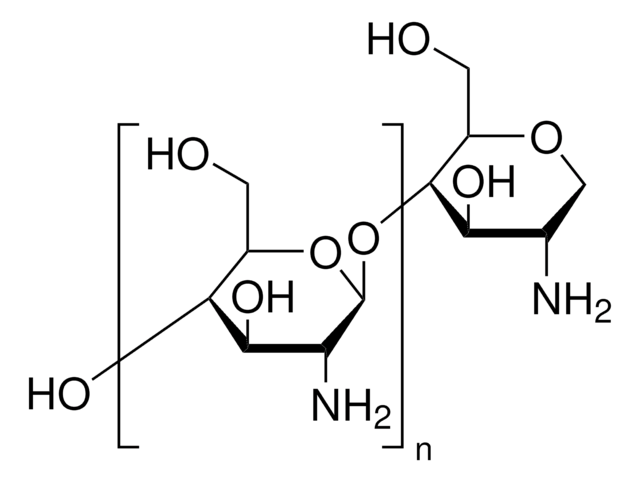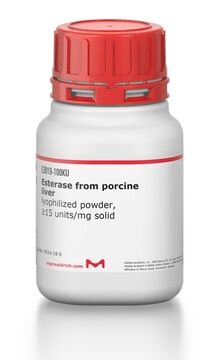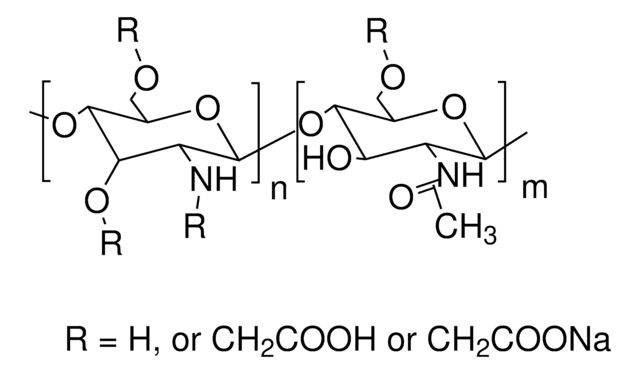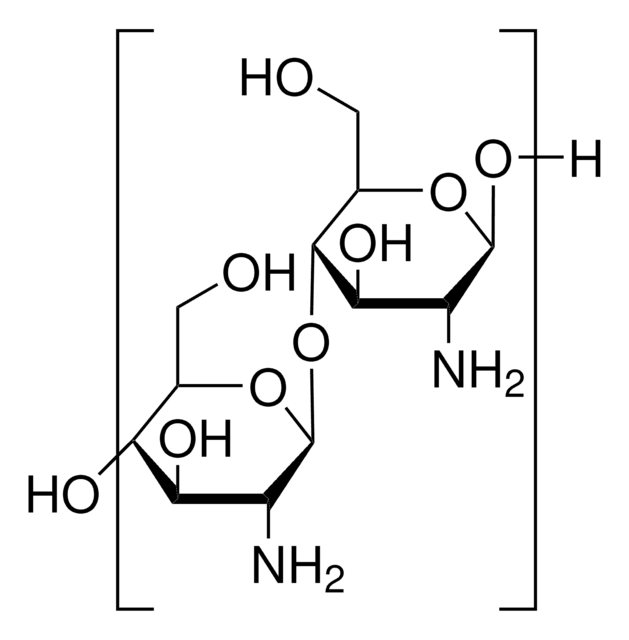Wszystkie zdjęcia(4)
Key Documents
G7753
Glycol chitosan
≥60% (titration), crystalline
Synonim(y):
Glycol chitin, deacetylated
Zaloguj sięWyświetlanie cen organizacyjnych i kontraktowych
About This Item
Polecane produkty
Postać
crystalline
Poziom jakości
masa cząsteczkowa
degree of polymerization ≥400
stężenie
≥60% (titration)
temp. przechowywania
−20°C
Zastosowanie
Glycol chitosan increases membrane permeability and leakage in Glycine max Harosoy 63w cells.
Inne uwagi
To gain a comprehensive understanding of our extensive range of Polysaccharides for your research, we encourage you to visit our Carbohydrates Category page.
This page may contain text that has been machine translated.
Kod klasy składowania
11 - Combustible Solids
Klasa zagrożenia wodnego (WGK)
WGK 3
Temperatura zapłonu (°F)
Not applicable
Temperatura zapłonu (°C)
Not applicable
Środki ochrony indywidualnej
Eyeshields, Gloves, type N95 (US)
Certyfikaty analizy (CoA)
Poszukaj Certyfikaty analizy (CoA), wpisując numer partii/serii produktów. Numery serii i partii można znaleźć na etykiecie produktu po słowach „seria” lub „partia”.
Masz już ten produkt?
Dokumenty związane z niedawno zakupionymi produktami zostały zamieszczone w Bibliotece dokumentów.
Klienci oglądali również te produkty
Gianni Ciofani et al.
International journal of nanomedicine, 7, 19-24 (2012-01-26)
Boron nitride nanotubes (BNNTs) have attracted huge attention in many different research fields thanks to their outstanding chemical and physical properties. During recent years, our group has pioneered the use of BNNTs for biomedical applications, first of all assessing their
D H Young et al.
Plant physiology, 70(5), 1449-1454 (1982-11-01)
Treatment of suspension-cultured Glycine max cv Harosoy 63 cells with soluble chitosan (20-500 micrograms per milliliter) increased membrane permeability as shown by leakage of electrolytes, protein, and UV absorbing material. Severe damage to the cell membrane by chitosan (100 and
Gianni Ciofani et al.
Nanoscale research letters, 5(7), 1093-1101 (2010-07-03)
In the latest years, innovative nanomaterials have attracted a dramatic and exponentially increasing interest, in particular for their potential applications in the biomedical field. In this paper, we reported our findings on the cytocompatibility of barium titanate nanoparticles (BTNPs), an
Yong-Su Song et al.
Microbial pathogenesis, 129, 277-283 (2019-03-03)
To investigate the temperature requirements of chitosanase activity, as well as the degradation patterns generated by enzyme-induced chitosan oligomer hydrolysis, Pedobacter sp. PR-M6 was inoculated onto 0.5% colloidal chitosan medium agar plates. Cell growth was higher at 30 °C than at
Navneet Kaur et al.
Carbohydrate polymers, 237, 116170-116170 (2020-04-04)
Poly (lactide-co-glycolide) (PLGA) nanoparticles surface functionalized with water soluble glycol chitosan (GC) and carboxymethyl chitosan (CMC) has been studied for their drug (Paclitaxel and Doxorubicin) loading, yield, cellular uptake, serum protein adsorption and hemocompatibility. It was observed that Paclitaxel (Ptxl)
Nasz zespół naukowców ma doświadczenie we wszystkich obszarach badań, w tym w naukach przyrodniczych, materiałoznawstwie, syntezie chemicznej, chromatografii, analityce i wielu innych dziedzinach.
Skontaktuj się z zespołem ds. pomocy technicznej



